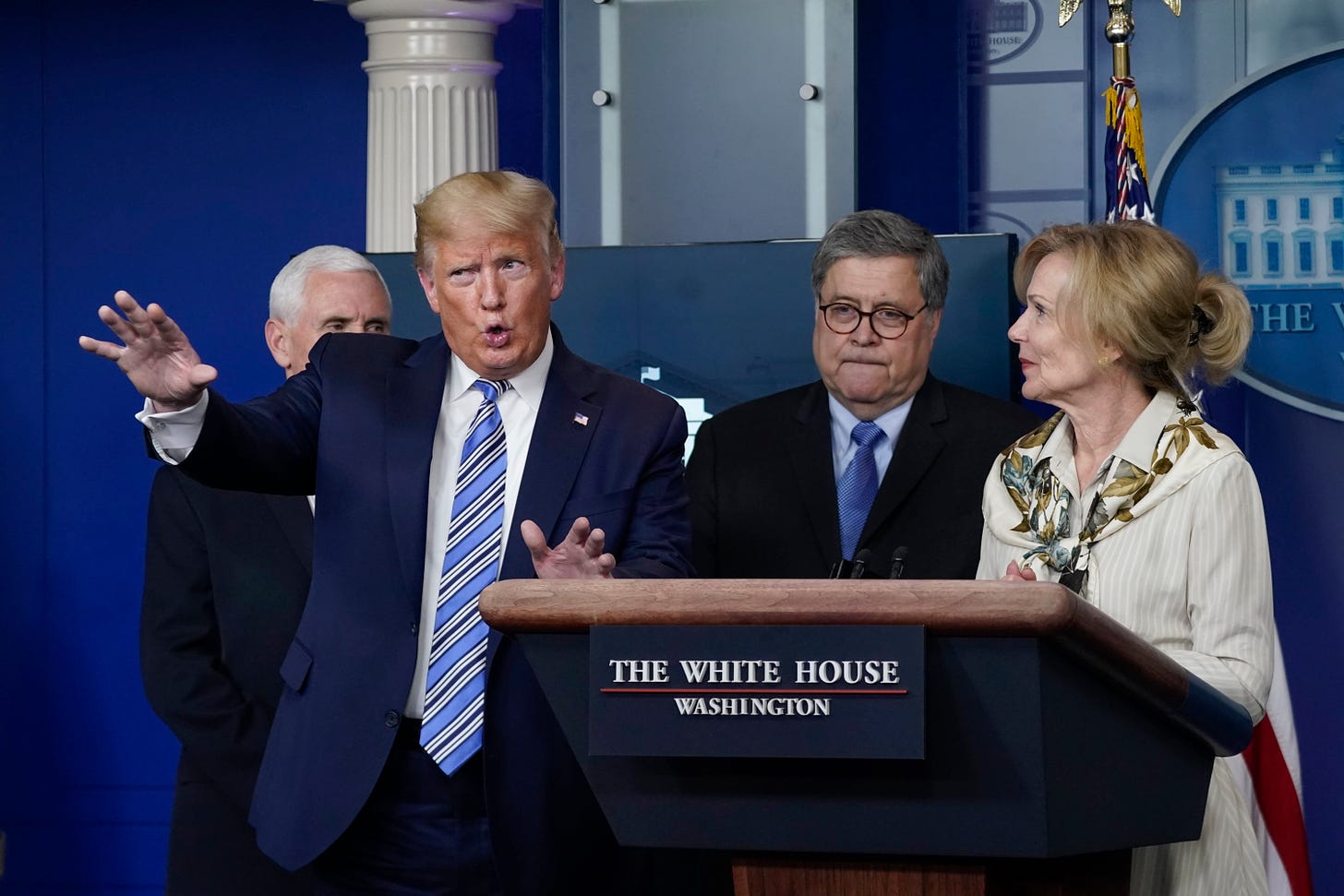Trump Identifies the Real Victim of the COVID-19 Epidemic: Himself

When the coronavirus enters the human body, it uses microscopic spikes to attach itself to mucous cell membranes in the back of a person’s throat. Through those spikes, the virus’ genetic material enters the human cells, repurposing those cells in order to make more of the virus. The viral cells then make their way down the bronchial tubes, inflaming the mucous membranes in the lungs. With oxygen impaired, the lungs become a breeding ground for pneumonia, causing the lungs to fill with “fluid, pus and dead cells.”
If the lungs fill with enough fluid that not even a respirator will help, the patient will often die.
Those patients have it easy, however, according to a prominent resident of the White House. Throughout the national battle with COVID-19, President Donald Trump has maintained that he, not those being infected with the often-deadly virus, is the true victim of the pandemic.
In briefing after briefing, Trump has lashed out at the news media who have dared to question his uneven handling of the crisis. On Twitter Wednesday, the president accused the “LameStream Media” of being “the dominant force in trying to get me to keep our Country closed as long as possible in the hope that it will be detrimental to my election success.”
Last week, when NBC News’ Peter Alexander asked the president what he would say to American citizens who were feeling scared, Trump answered with “I say that you’re a terrible reporter. That’s what I say.”
On Sunday, Trump couldn’t even let go of his victimhood complex for a brief second when told which U.S. senators were concerned they had contracted the virus. When a reporter informed the president that Utah Sen. Mitt Romney had quarantined himself, a sardonic Trump cracked, “Romney’s in isolation? Gee, that’s too bad.” Romney, of course, was the single Republican senator who voted to convict Trump in the impeachment trial that ended, incredibly, less than two months ago.
Trump’s hour-and-a-half briefing on Sunday delved into bizarre, Fellini-esque territory when he went on a tangent about the personal toll it had taken on him to run for president. "It cost me billions of dollars to be president of the United States," Trump said, after calling PBS reporter Yamiche Alcindor’s question about whether he has sold any stocks amid the outbreak a “nasty question.”
"I think it's very tough for rich people to run for office," the president told citizens anxious about losing their livelihoods in the face of a deadly pandemic.
Of course, Trump’s initial response to the crisis laid the blueprint for his future obfuscation and blundering of the facts. After claiming in late January that “we have it totally under control,” and that the virus was “one person coming in from China,” Trump quickly pivoted to accusing Democrats and the media of using COVID-19 as a “new hoax” to bring him down.
“They tried the impeachment hoax,” Trump told a rally in South Carolina on February 28. “That was on a perfect conversation. They tried anything. They tried it over and over. They’d been doing it since you got in. It’s all turning. They lost. It’s all turning. Think of it. Think of it. And this is their new hoax.”
When Washington Governor Jay Inslee was critical of Trump’s initial handling of the pandemic, Trump referred to Inslee as “a snake.”
“Let me just tell you, we have a lot of problems with the governor and the governor of Washington,” Trump said of Inslee, who, at the beginning of the outbreak was seeing his residents die at a faster rate than anywhere in the country. “That’s where you have many of your problems, OK?” Trump said, ignoring the fact that Washington residents were, in fact, constituents of his, as well.
At the same March 7 press conference, Trump suggested he has a natural affinity for science because he had an uncle who once taught at MIT and helped pioneer the use of radiation to treat cancer.
“Every one of these doctors said, ‘How do you know so much about this?’” Trump told the reporters gathered. “Maybe I have a natural ability. Maybe I should have done that instead of running for president.”
Clearly, when Trump sees any issue, he only sees himself and thinks only of how it affects his legacy. It is why, as he has begun to hold more frequent briefings, members of his Coronavirus Task Force must always shower him with ego-salvaging praise. Despite the fact that in each new press briefing the president seems more petulant than the last, Dr. Fauci and Dr. Birx continue to show grace and appease his constant neediness.
https://twitter.com/jaketapper/status/1242261023102550016?s=20
At the same time Trump is asking citizens to trust their government to respond to the coronavirus outbreak, he is trying to convince Americans that the government is untrustworthy. At the same time Trump needs to use the media to dispense accurate information about what his administration is doing to keep people safe, he is urging the public to not trust the media.
And while he continues to believe he is the victim of this pandemic, it is becoming increasingly clear that he is, himself, a virus.


